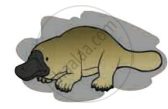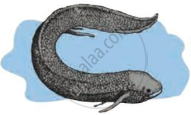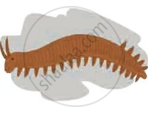Advertisements
Advertisements
प्रश्न
Where is carbon dating used?
उत्तर
Carbon dating is used in studying the paleontological evidences of evolution.
APPEARS IN
संबंधित प्रश्न
“Two areas of study namely 'evolution' and 'classification' are interlinked'. Justify this statement.
Four students P, Q, R and S differently reported the following set of organs to be analogous :
P. Forelimb of a frog and forelimb of a lizard
Q. Forelimb of a bird and forelimb of a human
R. Wings of a parrot and wings of a butterfly
S. Wings of a bird and wings of a bat
The two students who have reported correctly are :
(A) P and Q
(B) Q and R
(C) R and S
(D) P and S
Can the wing of a butterfly and the wing of a bat be considered homologous organs? Why or why not?
Explain with an example for the given, how the following provides evidence in favor of evolution in organisms :
Analogous organs
Explain with an example for the given, how the following provides evidence in favor of evolution in organisms :
Fossils
How do homologous organs help in providing evidence for organic evolution?
Human tailbone is a vestigial organ. Explain.
The forelimbs of a frog, a bird and a man show the same basic design (or basic structure) of bones. What name is given to such organs?
The organs which perform similar functions but have different basic structure are called :
(a) asymmetric organs
(b) analogous organs
(c) homologous organs
(d) homophonic organs
Wing of an insect and forelimb of a bird are :
(a) analogous organs
(b) analeptic organs
(c) homologous
(d) homophobic organs
Identify the following pairs as homologous and analogous organs:
(i) Sweet potato and potato
(ii) Eye of octopus and eye of mammals
(iii) Thorns of Bougainvillaea and tendrils of Cucurbits
(iv) Fore limbs of bat and whale
Vestigial organ ______ present in human body is proof of evolution.
Similarities in the initial stages indicate the _______ evidence.
Find an odd one out.
Find an odd one out.
Name the parts shown in the diagram.
Human jaw

Appendix : vestigial organ : : Peripatus : ____________
Give scientific reason.
Peripatus is said to be the connecting link between Annelida and Arthropoda.
Enlist the evidences of evolution.
Define the evidence of evolution shown in the figure.

Observe the given images and answer the following questions.

- Which evolutionary evidence does it indicate?
- What does it prove?
- State another example of evolutionary evidence.
Write the answers to the questions by observing the figure below.
 |
 |
 |
| (a) | (b) | (c) |
- Write the name of the animal ‘(a)’ in the figure.
- Write the name of the animal ‘(b)’ in the figure.
- Write the name of the animal ‘(c)’ in the figure.
- Which evolutionary evidence is illustrated by this figure?
- Write the definition of that evidence for evolution.
Homologous organs and vestigial organs are examples of ______ type of evidence in evolution.
Which of these is not a vestigial organ in human beings?
The fossil remains of Archaeopteryx is a connecting link between ______
Homologous organs are:
Which is not a vestigial organ in a man?
Flippers of Penguins and Dolphins are examples of:
Fossils are generally found in ______.
Did aquatic life forms get fossilised? If, yes where do we come across such fossils?
How do we compute the age of a fossil?
How do we compute the age of a rock?
While creation and presence of variation is directionless, natural selection is directional as it is in the context of adaptation. Comment.
Complete the following diagram:

Give a scientific reason.
Morphological evidences suggest that dog, sheep and wolf have a common origin.
Give a definition of Palaeontology.
